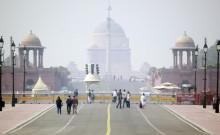
India, home to the largest number of visually impaired individuals globally, is grappling with a significant public health challenge. An estimated 34 million people in the country live with blindness or moderate to severe visual impairment (MSVI). However, experts have recently shed light on a startling fact: more than 85% of these cases are preventable or treatable. On World Sight Day, a day dedicated to raising awareness about blindness and vision impairment, experts from the field of ophthalmology shared their insights. Dr. Rajesh Sinha, a professor at the Department of Ophthalmology, AIIMS New Delhi, emphasized the need for public awareness. He stated, Nearly 85 per cent of blindness in the world is avoidable which can either be preventable or treatable.
The causes of preventable blindness are varied. Infections and vitamin A deficiency can lead to ocular issues, while treatable blindness can be caused by conditions such as cataract, uncorrected refractive error, and diabetic retinopathy. Cataract, in particular, is a significant contributor to the prevalence of blindness in India. According to the National Blindness and Visual Impairment Survey, cataracts account for a staggering 66.2% of all blindness cases in the country. Other causes include uncorrected refractive errors (18.6%), glaucoma (6.7%), corneal opacities (0.9%), childhood blindness (1.7%), and diabetic retinopathy (3.3%).
Dr. Ikeda Lal, a Senior Cornea, Cataract, and Refractory Surgery Specialist at Sir Ganga Ram Hospital New Delhi, echoed Dr. Sinha's sentiments. He emphasized the importance of spreading awareness about preventable blindness, stating, More than 85 per cent of the blindness is preventable if only people know how to address them. Diabetic retinopathy, a complication of diabetes that affects the eyes, is another significant cause of blindness in India. Given the high prevalence of diabetes in the country, this condition is a growing concern. Regular screenings and proper treatment can prevent the onset of diabetic retinopathy, highlighting the importance of early detection and intervention.

The issue of preventable blindness is not new in India. The country has been grappling with this public health challenge for years. The uneven distribution of eye care facilities, particularly in rural areas, exacerbates the problem. This disparity in access to eye care services can have long-term impacts on individuals, families, and the economy. Children with visual impairment are less likely to attend school and receive a quality education, limiting their future job opportunities and earning potential. This, in turn, can perpetuate the cycle of poverty and hinder overall economic growth. In recent years, advancements in assistive eyewear technology have shown promise in helping visually impaired individuals. Devices like the OrCam MyEye Pro actively analyze and describe the world around them, aiding those with complete blindness. Similarly, 'smart' walking sticks equipped with artificial intelligence can assist visually impaired users in navigating their surroundings, potentially replacing traditional walking sticks.
Despite these advancements, the need for public awareness and early intervention remains paramount. As Dr. Sinha and Dr. Lal have emphasized, the majority of blindness cases in India are preventable or treatable. By raising awareness about this issue and promoting early screenings and treatments, India can significantly reduce the prevalence of blindness and visual impairment, improving the quality of life for millions of its citizens. This is not just a health issue, but a social and economic one that requires immediate attention and action.








